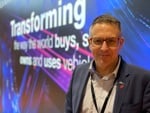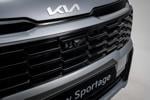Fuel cell vehicles run on electricity generated by an electrochemical process using hydrogen and oxygen. They are quiet and clean, with the only emission being water vapour.
'We are making real progress on the way to a means of transport that combines the comfort of a normal car with zero pollution,' Busquin said at the Energy of Future, European fuel cell research conference, in Brussels.
New European Union projections forecast that in a business-as-usual scenario, world energy demand will double between 2000 and 2030, and predict that energy-related carbon dioxide emissions would increase to 13 billion tonnes from 6.3 billion tonnes per year.
While the EU recognised car makers' attempts to produce fuel cell vehicles, it said a political decision needs to be made about the future supply and distribution of hydrogen, in terms of fuel stations, quality standards and tax incentives.
Other problems identified by the EC include fuel cell vehicles costing considerably more than traditional cars and the fact that they have a short driving range.
'These new cars need hydrogen to work, which is flammable and, when accidentally coming into contact with air, can explode,' said an EC spokesman.
'Scientific risk assessments and test conducted by the EU's Joint Research Centre in Ispra have however, come to the conclusion that this risk is neither unacceptable nor unmanageable and can be compared to the risks involved in the use of gasoline.'
Last month, Fleet News Europe reported that BMW expects to sell several thousand hydrogen cars by 2010, by which date it also aims to have a network of hydrogen fuel stations all over Europe. (July 2000)















Login to comment
Comments
No comments have been made yet.